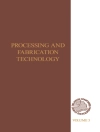- Comprehensive, systematic review of advances in key CRISPR/Cas technologies, such as TALENS and zinc finger nucleases, double-strand break repair techniques, insertion-based genome edits, base editing, guide RNAs, g RNA/Cas9 constructs and CRISPR/Cas off targeting
- Covers both techniques and their practical application to particular cereal and other crops
- Discusses challenges in regulating this emerging technology
Innehållsförteckning
Part 1 Genome editing techniques
1.Using TALENs for genome editing in plants: Hilal Betul Kaya, Manisa Celal Bayar University, Turkey; Rhitu Rai, ICAR-National Institute for Plant Biotechnology, India; and Adam J. Bogdanove, Cornell University, USA;
2.Double strand break (DSB) repair pathways in plants and their application in genome engineering: Natalja Beying, Carla Schmidt and Holger Puchta, Karlsruhe Institute of Technology, Germany;
3.Advances in the generation of insertion-based genome edits in plants: Baike Wang and Juan Wang, Institute of Horticulture Crops – Xinjiang Academy of Agricultural Sciences, China; Shaoyong Huang, Institute of Horticulture Crops – Xinjiang Academy of Agricultural Sciences and College of Forestry and Horticulture – Xinjiang Agricultural University, China; and Yaping Tang, Ning Li, Shengbao Yang, Tao Yang and Qinghui Yu, Institute of Horticulture Crops – Xinjiang Academy of Agricultural Sciences, China;
4.Viruses as vectors for the delivery of gene-editing reagents: Evan E. Ellison, James C. Chamness and Daniel F. Voytas, University of Minnesota, USA;
5.Progress in precise and predictable genome editing in plants with base editing: Sabine Fräbel, Shai J. Lawit, Jingyi Nie, David G. Schwark, Thomas J. Poorten and Nathaniel D. Graham, Pairwise Plants, USA;
6.Advances in guide RNA design for editing plant genomes using CRISPR-Cas systems: Kaiyuan Chen, Hao Liu and Kabin Xie, Huazhong Agricultural University, China; Muhammad Tahir ul Qamar and Ling-Ling Chen, Huazhong Agricultural University, and Guangxi University, China;
7.Advances in assembling g RNA/Cas9 constructs in genome editing of plants: Marta Vázquez Vilar, Sara Selma, Asun Fernández del Carmen and Diego Orzáez, Instituto de Biología Molecular and Celular de Plantas de Valencia (CSIC-UPV), Spain;
8.Strategies for CRISPR/Cas9-mediated genome editing: from delivery to production of modified plants: William Gordon-Kamm, Pierluigi Barone, Sergei Svitashev, Jeffry D. Sander, Sandeep Kumar and Todd Jones, Corteva Agriscience, USA;
9.Advances in screening plants for edits and off-targets: Chun Wang and Kejian Wang, China National Rice Research Institute, China;
10.Targeted modification of promoters: Andika Gunadi and Ning Zhang, Boyce Thompson Institute, USA; and John J. Finer, The Ohio State University, USA;
11.The regulation of genome-edited crops: Gregory Jaffe, Center for Science in the Public Interest, USA;
Part 2 Applications
12.Genome editing of barley: Martin Becker, Leibniz Institute of Plant Genetics and Crop Plant Research (IPK), Germany; and Goetz Hensel, Leibniz Institute of Plant Genetics and Crop Plant Research (IPK), Germany, and Palacký University, Czech Republic;
13.Genome editing of maize: Jacob D. Zobrist, Morgan Mc Caw, Minjeong Kang, Alan L. Eggenberger, Keunsub Lee, and Kan Wang, Iowa State University, USA;
14.Genome editing of sorghum: Aixia Li, Shandong University, China; and David R. Holding, University of Nebraska-Lincoln, USA;
15.CRISPR/Cas9-mediated genome editing in Brassica: Cheng Dai, Xia Tian and Chaozhi Ma, Huazhong Agricultural University, China;
16.Genome editing of tomatoes and other Solanaceae: Joyce Van Eck, The Boyce Thompson Institute and Cornell University, USA;
17.Genome editing of woody perennial trees: Chung-Jui Tsai, University of Georgia, USA;
Om författaren
Dr Andika Gunadi is a Researcher in Plant Genetics and Genetic Regulation at the Boyce Thompson Institute, USA. He’s currently working on applying novel transformation and CRISPR approaches in plants.












